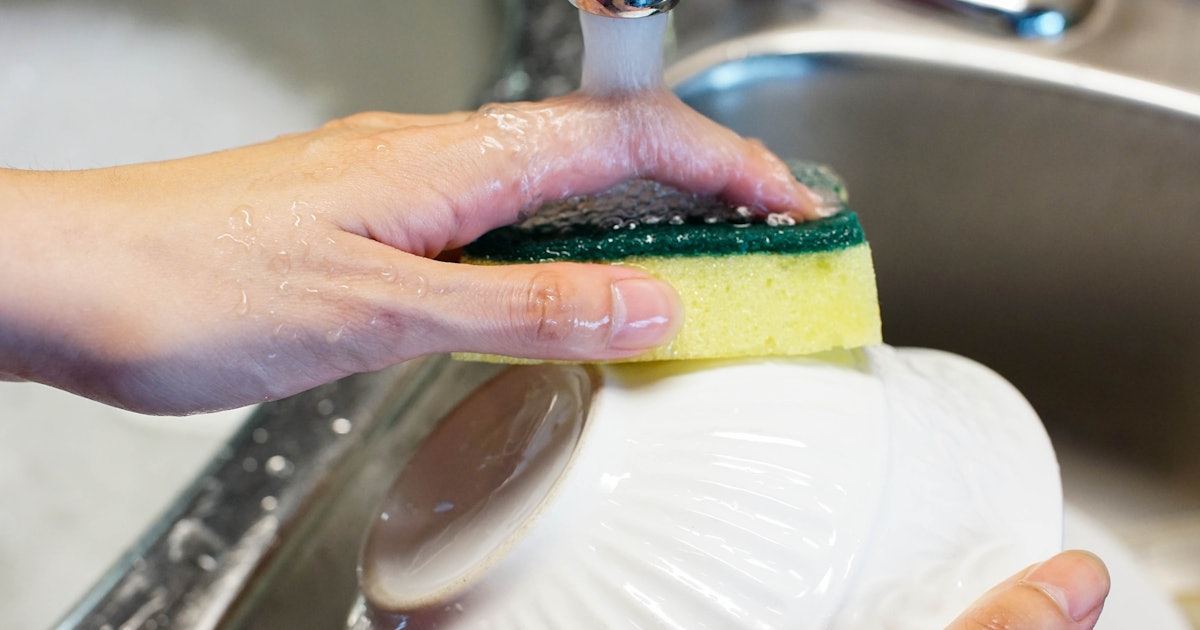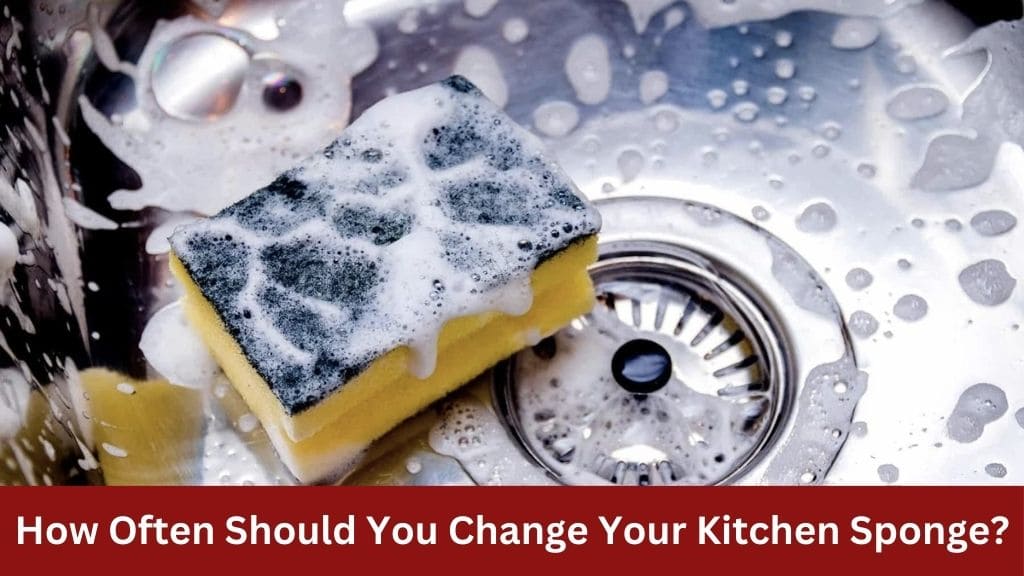Sponges are a staple in most kitchens, used for various cleaning tasks from washing dishes to wiping down countertops. However, what many people may not realize is that these seemingly innocuous cleaning tools can harbor a host of harmful bacteria and pathogens if not replaced regularly. In this comprehensive guide, we will delve into the importance of changing your kitchen sponge, the potential health risks associated with using a dirty sponge, and practical tips for maintaining a clean and hygienic kitchen environment.
The Importance of Regularly Changing Your Kitchen Sponge

1. Bacterial Contamination:
- High Bacterial Load: Kitchen sponges have been identified as one of the most contaminated items in households, harboring a diverse array of bacteria including E. coli, Salmonella, and Campylobacter.
- Ideal Breeding Ground: Sponges provide a warm, moist environment conducive to bacterial growth, making them an ideal breeding ground for pathogens.
2. Risk of Foodborne Illnesses:
- Transfer of Bacteria: Bacteria present in dirty sponges can easily transfer to surfaces, utensils, and hands during cleaning, increasing the risk of foodborne illnesses.
- Cross-Contamination: Using a contaminated sponge to clean dishes or kitchen surfaces can lead to the spread of harmful bacteria, potentially resulting in gastrointestinal infections and other health issues.
3. Ineffective Cleaning:
- Reduced Cleaning Efficiency: Over time, a dirty sponge becomes less effective at cleaning due to bacterial buildup and degradation of its structure.
- Reservoir of Germs: Rather than removing dirt and grime, a contaminated sponge may inadvertently spread bacteria, contributing to the overall unsanitary conditions in the kitchen.
4. Persistence of Bacteria:
- Resistance to Cleaning Methods: While some cleaning methods such as washing with soap and water or microwaving can reduce bacterial load to some extent, they may not eliminate all pathogens present in the sponge.
- Recolonization: Bacteria can quickly recolonize and multiply in a sponge after cleaning, especially if it is not replaced regularly, perpetuating the cycle of contamination.
5. Household Safety and Hygiene:
- Protection of Family Health: Regularly changing your kitchen sponge is an important aspect of maintaining a safe and hygienic home environment, especially in households with young children, elderly individuals, or individuals with weakened immune systems.
- Preventive Measure: Proactively replacing sponges on a weekly basis or as needed reduces the risk of bacterial contamination and helps prevent the spread of infectious diseases within the household.
How Often Should You Replace Your Kitchen Sponge?

1. Usage Habits:
- Frequency of Use: If you use your kitchen sponge multiple times a day for tasks such as washing dishes, wiping countertops, and cleaning appliances, it will accumulate bacteria more rapidly and require more frequent replacement.
- Intensity of Use: Sponges used for heavy-duty cleaning tasks, such as scrubbing pots and pans, may wear out more quickly and become less effective at removing dirt and grime, necessitating more frequent replacement.
2. Cleaning Routines:
- Daily Maintenance: Incorporating a daily cleaning routine for your sponge, such as rinsing it thoroughly after each use and sanitizing it with hot water and soap, can help extend its lifespan and delay the need for replacement.
- Sanitization Methods: Utilizing effective sanitization methods, such as microwaving or soaking the sponge in a bleach solution, can help reduce bacterial contamination and prolong the usefulness of the sponge between replacements.
3. Type of Sponge:
- Material: The material composition of the sponge can impact its durability and susceptibility to bacterial growth. For example, cellulose sponges tend to break down more quickly than silicone sponges and may need to be replaced more frequently.
- Quality: Higher quality sponges made from durable materials may last longer and withstand repeated use and cleaning cycles better than cheaper, lower quality sponges.
4. Environmental Conditions:
- Humidity: High humidity levels in the kitchen can promote bacterial growth and accelerate the deterioration of sponges, requiring more frequent replacements to maintain hygiene.
- Temperature: Extreme temperatures, such as prolonged exposure to heat or direct sunlight, can cause sponges to degrade and become less effective at cleaning, necessitating replacement.
5. Visual and Olfactory Cues:
- Foul Odor: A persistent foul odor emanating from your sponge is a telltale sign of bacterial contamination and indicates that it should be replaced promptly to prevent the spread of harmful bacteria.
- Visible Signs of Wear: Sponges that are discolored, frayed, or falling apart are less effective at cleaning and may harbor bacteria in crevices and pores, necessitating immediate replacement.
Best Practices for Cleaning and Sanitizing Your Kitchen Sponge

1. Daily Cleaning Routine:
- Rinse Thoroughly: After each use, rinse the sponge thoroughly under running water to remove any food debris, soap residue, and other contaminants.
- Use Hot Water and Soap: Wash the sponge with hot water and dish soap to help break down grease and remove bacteria.
- Scrubbing Action: Use your hands or a scrub brush to gently scrub the sponge and ensure all surfaces are cleaned.
2. Sanitization Methods:
- Microwave Sterilization: Place the damp sponge in the microwave and heat it on high for 1-2 minutes to kill bacteria effectively. Ensure the sponge is wet but not dripping to avoid the risk of fire.
- Bleach Solution Soaking: Create a dilute bleach solution by mixing one part bleach with nine parts water. Submerge the sponge in the solution and let it soak for 5-10 minutes before rinsing thoroughly.
- Vinegar Soaking: Soak the sponge in undiluted vinegar for 5-10 minutes to harness its natural antibacterial properties. Rinse the sponge thoroughly afterward to remove any residual vinegar.
3. Drying Process:
- Air Dry: After cleaning and sanitizing the sponge, allow it to air dry completely in a well-ventilated area. Avoid storing the sponge in a damp or enclosed space, as this can promote bacterial growth.
- Sunlight Exposure: If possible, place the sponge in direct sunlight to further aid in drying and disinfection. Sunlight has natural antibacterial properties that can help kill bacteria and prevent their regrowth.
4. Regular Replacement:
- Weekly Basis: While proper cleaning and sanitization can extend the lifespan of your sponge, it is still recommended to replace it on a weekly basis to ensure optimal cleanliness and hygiene.
- Visual Inspection: Regularly inspect your sponge for signs of wear, such as discoloration, fraying, or an unpleasant odor. If the sponge shows any of these signs, it should be replaced immediately to prevent the spread of bacteria.
5. Alternative Cleaning Methods:
- Silicone Sponges: Consider using silicone sponges, which are more durable and resistant to bacterial growth than traditional cellulose sponges. Silicone sponges can be cleaned and sanitized by boiling, soaking in bleach solution, or washing in the dishwasher.
- Boiling Water Treatment: Boil a pot of water and submerge the sponge, allowing it to boil for 5-10 minutes. This method effectively kills bacteria and sterilizes the sponge, making it safe for continued use.
Alternative Cleaning Methods and Considerations

1. Silicone Sponges:
- Durability: Silicone sponges are made from durable, non-porous materials that are resistant to bacterial growth and degradation. They tend to last longer than traditional cellulose sponges and can withstand repeated use and cleaning cycles.
- Ease of Cleaning: Silicone sponges are dishwasher safe and can be easily cleaned and sanitized by placing them in the dishwasher along with your regular dishwashing cycle. This ensures thorough cleaning and disinfection of the sponge without the need for additional steps.
- Versatility: Silicone sponges can be used for a variety of cleaning tasks in the kitchen, including washing dishes, wiping countertops, and scrubbing pots and pans. They are also suitable for use on delicate surfaces such as non-stick cookware and glassware.
2. Vinegar Soaking:
- Natural Antibacterial Properties: Vinegar is known for its natural antibacterial properties, making it an effective and eco-friendly option for sanitizing kitchen sponges.
- Simple Procedure: To sanitize your sponge using vinegar, simply soak it in undiluted vinegar for 5-10 minutes. The acidic nature of vinegar helps kill bacteria and neutralize odors, leaving your sponge clean and fresh.
- Rinsing: After soaking, rinse the sponge thoroughly under running water to remove any residual vinegar and ensure it is safe for use.
3. Boiling Water Treatment:
- Sterilization: Boiling water is a simple yet effective method for sterilizing kitchen sponges and killing bacteria. The high temperature of boiling water effectively kills bacteria and other pathogens, making it safe for use in food preparation areas.
- Procedure: Bring a pot of water to a boil and submerge the sponge in the boiling water. Allow the sponge to boil for 5-10 minutes, ensuring thorough sterilization. Remove the sponge from the water and allow it to cool before use.
- Considerations: While boiling water treatment is effective for sanitizing sponges, it may not be suitable for all types of sponges, especially those made from delicate materials that may be damaged by high heat.
4. Expert Insights:
- Recommendations: Experts in the field of cleaning and sanitation may offer valuable insights and recommendations for effectively sanitizing kitchen sponges. They can provide guidance on the best practices and techniques for maintaining a clean and hygienic kitchen environment.
- Considerations: When exploring alternative cleaning methods, it’s important to consider factors such as the type of sponge, material composition, and manufacturer recommendations. Some methods may be more suitable for certain types of sponges than others, so it’s essential to choose the method that best suits your needs and preferences.
Expert Insights and Recommendations

1. Jessica Ek, American Cleaning Institute:
- Expertise: Jessica Ek is the Senior Director of Digital Communications at the American Cleaning Institute (ACI), a leading organization dedicated to promoting cleanliness and hygiene.
- Insights: Jessica Ek offers insights into best practices for cleaning and sanitizing kitchen sponges based on scientific research and industry standards.
- Recommendations: She emphasizes the importance of regular sponge replacement and proper sanitation practices to prevent bacterial contamination and ensure a clean and safe kitchen environment.
2. Marla Mock, Molly Maid:
- Expertise: Marla Mock is the President of Molly Maid, a nationwide cleaning service renowned for its expertise in household cleaning and sanitation.
- Insights: Marla Mock provides insights into effective cleaning methods and alternative techniques for sanitizing kitchen sponges based on years of experience in the cleaning industry.
- Recommendations: She offers practical tips and recommendations for maintaining a clean and hygienic kitchen, including advice on daily cleaning routines, sanitization methods, and proper sponge care.
3. Expert Advice:
- Specialized Knowledge: Cleaning industry experts possess specialized knowledge and expertise in the field of sanitation and hygiene.
- Customized Recommendations: They can offer customized recommendations based on individual needs and preferences, taking into account factors such as sponge type, usage habits, and environmental conditions.
- Stay Updated: Experts stay updated on the latest research, trends, and developments in the cleaning industry, allowing them to provide informed recommendations and guidance to consumers.
4. Consumer Education:
- Empowering Consumers: Expert insights empower consumers with the knowledge and tools they need to maintain a clean and healthy home environment.
- Effective Strategies: By disseminating expert advice and recommendations through various channels, such as websites, social media, and educational materials, consumers can learn effective strategies for cleaning and sanitizing kitchen sponges.
- Long-Term Benefits: Educating consumers about proper cleaning practices and hygiene habits promotes long-term health and well-being, reducing the risk of bacterial contamination and preventing the spread of infectious diseases.
Conclusion
Regularly changing your kitchen sponge is essential for maintaining a clean and hygienic environment in your home. By following the recommended guidelines for sponge replacement and implementing proper cleaning and sanitization practices, you can minimize the risk of bacterial contamination and ensure the safety of you and your family. Remember, a small investment in sponge replacement can have significant benefits for your health and well-being in the long run.





